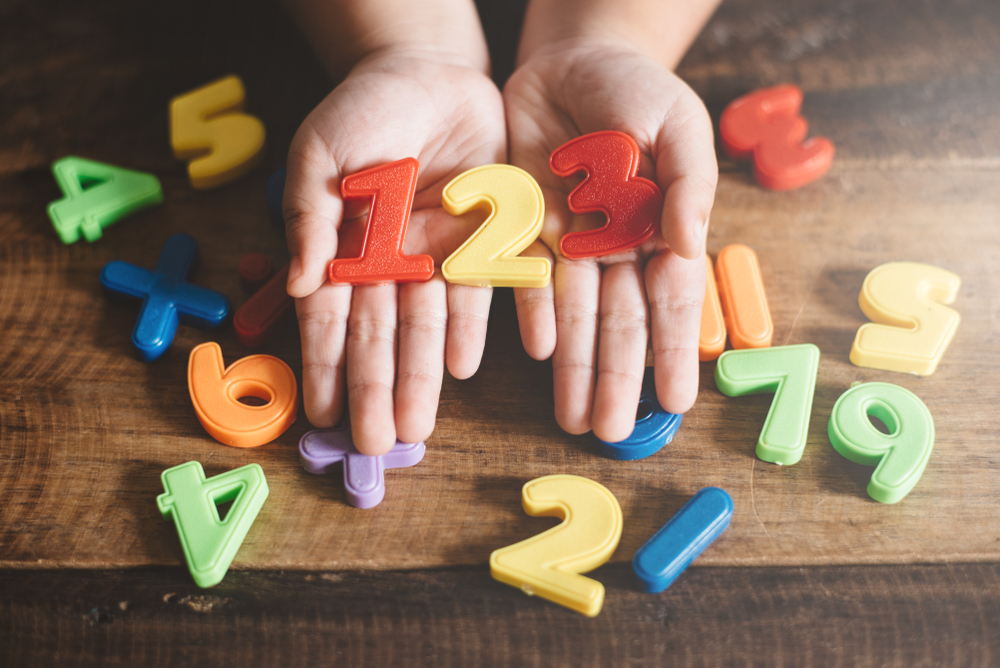
How to Teach Your Little One About Money
When our children are young, we’re often focused on teaching them basic skills like how to get dressed or how to clean up their toys after playtime. However, it’s important to recognize that life skills are established in early childhood as well. For example, kids tend to develop spending habits and attitudes towards money management by age ten. That means, even if you don’t realize it, you’re shaping your child’s lifelong spending habits well before they’re through elementary school.
It can be a challenge to approach a complex subject like money and finance with a preschooler, but there are many ways to start guiding your young child to financial literacy. Here are a few strategies to try:
Start at a Young Age
Infants and toddlers are in a constant state of discovery—they’re always learning new things and looking to their parents to teach them about the world around them. Preschool age is an appropriate time to start explaining to your child what money is and how it’s used. It can be tough for children to grasp the exchange process of spending money. They may not immediately recognize that once money is spent, it’s gone. A helpful strategy is to give your child a small amount of money (just a few dollars) when they tag along for grocery shopping trips that they can spend on an item of their choosing.
Practice Numbers and Counting

Of course, to be good with money, children must have a solid foundation with numbers and basic math skills. Counting games are a great way to help your child gain a better grasp on counting, addition, and subtraction. One helpful strategy for learning numbers is to staple 10-20 sheets of paper together and number each page. Then, have your child draw a certain number of items on each page—one item on page one, two items on page two, and so on.
Board games such as Candyland and Hi Ho! Cherry-O is also a great way to practice counting and math skills while having fun and enjoying time together as a family.
Involve Your Children in Household Shopping
As a parent, you know that children are great imitators. They learn by following your example! With that in mind, make it a point to involve your children in household shopping by showing them that money must be spent to bring home groceries, toys, clothes, and furniture. Cash is more tangible for younger kids, so make a point of making purchases with paper money. You might even have your child hand the money over to the cashier and take back the change. As children get older, you can introduce them to the concept of debit and credit cards and show them shopping receipts to demonstrate how card-based transactions work.
Encourage Your Child to Save Money
Once your child understands the basic concept of spending, it’s time to teach them the value of saving money as well. To get children excited about saving money, it’s useful to establish a short-term savings goal like saving up for a new toy. While you may already be saving for their college fund, they might not understand the value of long-term savings when they’re still in preschool or kindergarten. A classic piggy bank is a good start for teaching children to save, but you might also open their own bank account that they can manage with your help as they get a little older. With a real savings account, you can then begin to show them more complex concepts like building interest.
Learning about saving money from an early age is important because it allows children to gain more discipline and learn about delayed gratification. You can also show your child the value of savings by involving them in managing your household savings fund. This way, they’ll learn how saving money can help them remain prepared for unexpected spending.

Create Ways for Your Child to Earn Money
Of course, for your child to save money, they’ll need to have some income. While they may receive monetary gifts from relatives on birthdays and other special occasions, it’s important for children to see that money must be earned. Providing an allowance in exchange for household chores is a tried and true way to help kids learn about earning money. You can also get creative and reward other positive behaviors like earning good grades, being kind to other children at daycare, or helping a sibling or other family member.
Set a Positive Example with Your Spending
When you’re teaching your little ones about money, remember that they’ll pick up on your attitudes and spending practices even when you’re not explicitly teaching them about money. So, it’s important to remember to think twice about impulse purchases, savings habits, and household money management and practice what you preach.
Give Your Child a Great Start with the Right Early Childhood Education
If your child is approaching preschool age or you’re looking for a daycare or afterschool program for your little one, find an engaging, supportive environment where your child can learn, grow, and discover new things every day with My Childcare Academy. We teach through play and provide a welcoming, safe atmosphere where children can thrive. Contact us at (385) 342-5700 or via our Contact Page to request more information or schedule a tour of our daycare and preschool.
